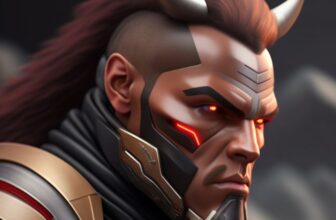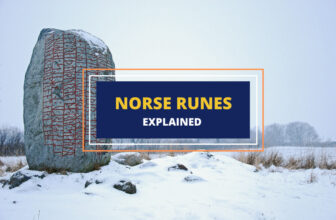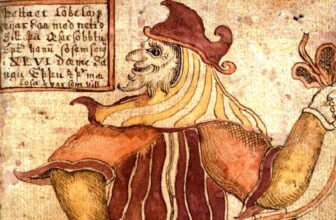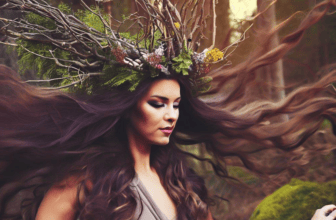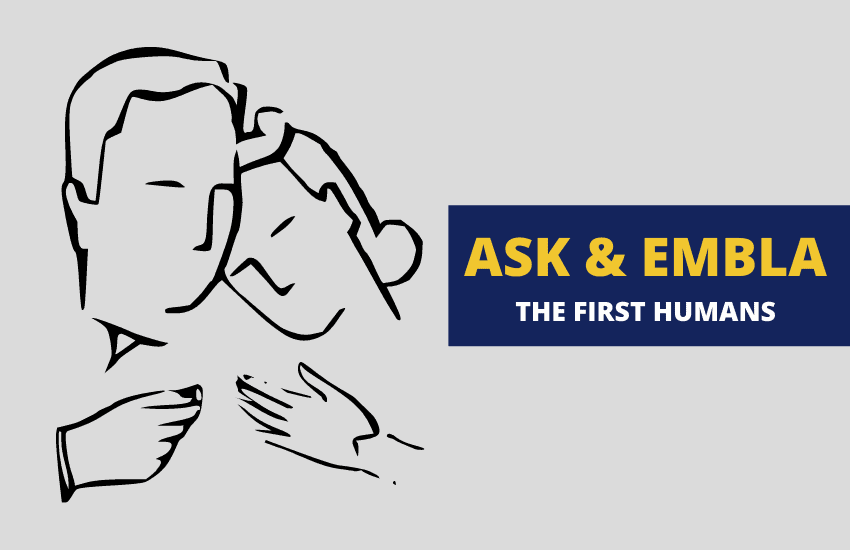
Table of Contents
Ask and Embla are the first humans created by the gods, according to Norse mythology. As the legend goes, all people today are their descendants and humankind has ruled Midgard (Earth) from the very beginning because Ask and Embla were given dominion over the land by Odin himself. But who exactly were Ask and Embla and how did they come to be?
Who are Ask and Embla?
Ask or Askr was the first man while Embla, the first woman, was created together with him as his equal. This is similar to the Bible myth of the creation of the first man and woman, but with one notable difference – Embla was not created from Ask’s rib and therefore, she was his equal.
The Creation
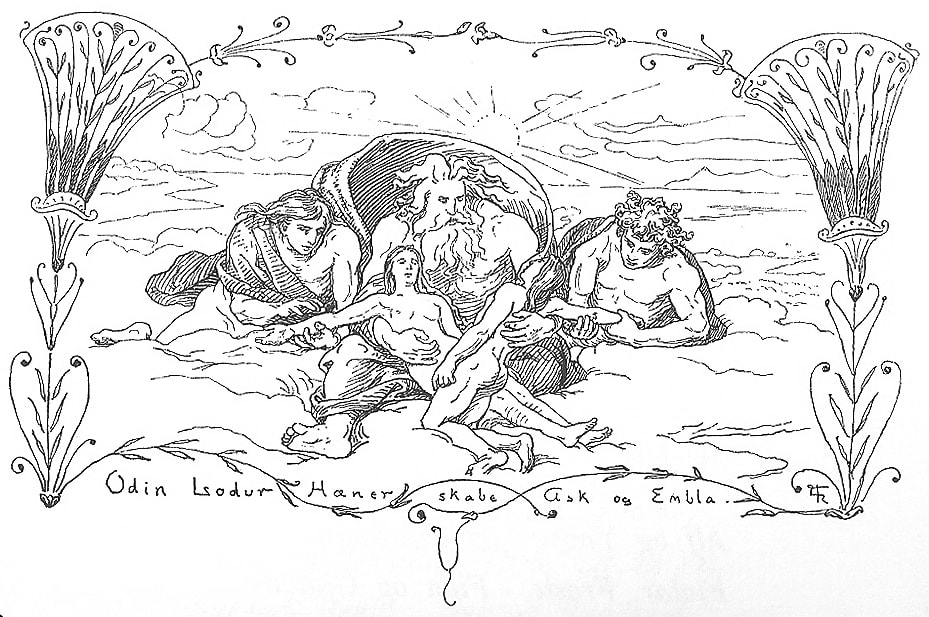
Ask and Embla were created on an unnamed coastline, presumably somewhere in Northern Europe. This happened right after the world itself came to be as Odin and his brothers killed the celestial giant/jötunnYmir and formed the realms from his flesh.
So, as Odin, Vili, and Ve (or Odin, Hoenir, and Lodur in some versions of the myth) walked on the coastline of the land they created, the trio saw two human-shaped tree trunks floating in the water. The gods pulled them out onto the ground to inspect them and concluded that the tree trunks were lifeless. They resembled the look of the gods so much, however, that the three brothers decided to give them life.
First, Odin infused the pieces of wood with the breath of life and turned them into living beings. Then, Vili and Ve gave them the ability to think and feel, as well as gave them their sight, hearing, speech, and clothes.
They named the couple Ask and Embla. They gave them Midgard as their dwelling place and left them to freely populate and civilize it as they saw fit.
Why These Names?
The meaning of Ask’s name is pretty well-understood – it almost certainly comes from the Old Norse word Askr, meaning Ash tree. Given that both Ask and Embla were made from tree trunks this is quite fitting.
In fact, there is a tradition in Norse mythology to name things from trees. As the Nine Realms are also connected by the World Tree Yggdrasil, the Norse people had a special reverence for trees.
Some scholars even speculate that the tree trunks may have been parts of Yggdrasil itself, floating in the newly formed seas of the world. While possible, this isn’t explicitly stated in the poemVöluspá in the Poetic Edda –which details the creration of Ask and Embla.
Because the previous stanzas (lines) talk about dwarves and there are some stanzas missing between them and Ask and Embla’s story, it’s just as possible that the Völuspá may have explained that the tree trunks were fashioned by dwarves. Regardless, Ask’s name categorically references the tree from which he was created. While it’s possible and would be in line thematically with the rest of Norse mythology, we can’t know for certain.
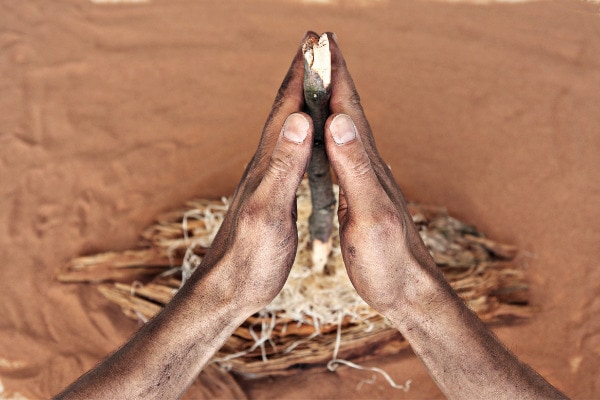
As for Embla’s name, that’s more complicated and there are several possible origins, mainly the Old Norse words for Water Pot, Elm, or Vine. Vines were used to make fire because they burnt easily. Branches, which were typically of hardwood and therefore corresponded to Ask, would be drilled into the vine with rapid circular motions until a spark was produced and fire (representing life) was created. Naming the two first humans after this method for creating fire may have been a reference to procreating.
Another possibility about Embla’s name might be the word amr, ambr, aml, ambl, meaning a busy woman. This was originally speculated by the English scholar Benjamin Thorpe as he worked on translating the Völuspá. He draws a parallel with the first human couple Meshia and Meshiane of the ancient Zoroastrian myths, who were also created by pieces of wood. According to him, the two myths might have a common Indo-European origin.
Are Ask and Embla Adam and Eve?
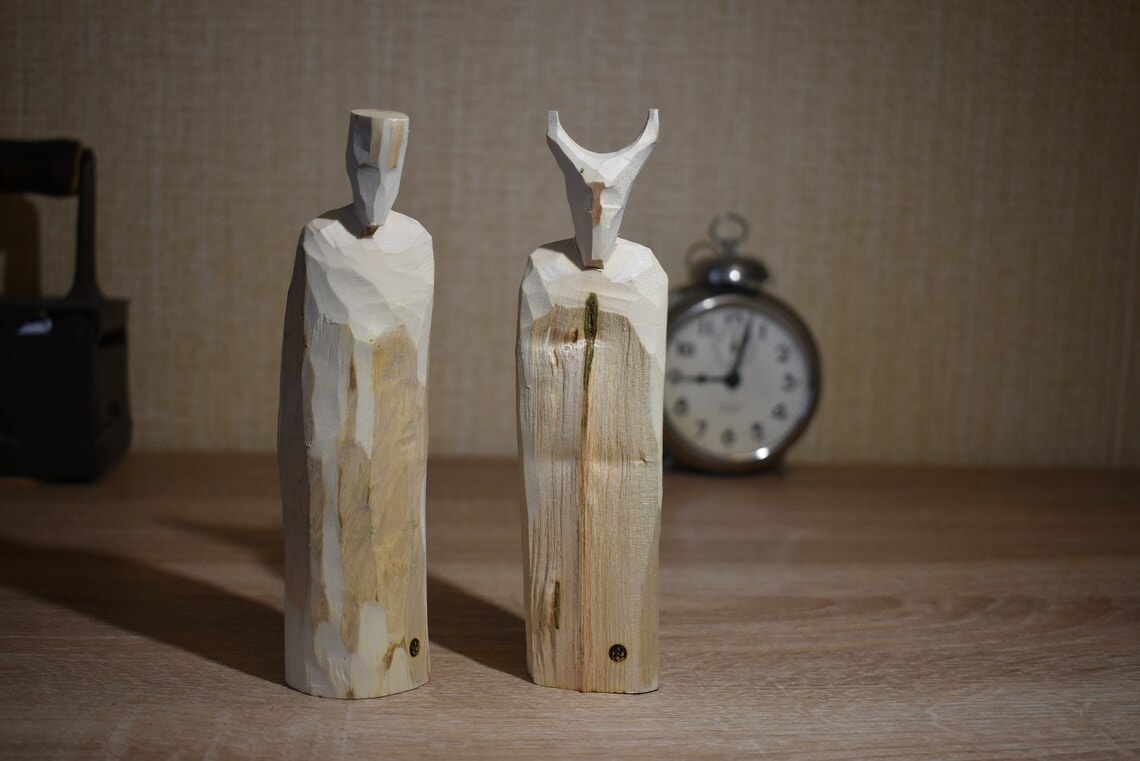
There are undoubtedly similarities between Ask and Embla and the other famous “first couple” in the Abrahamic religions – Adam and Eve.
- For starters, their names seem etymologically similar as both male names start with “A” and both female names – with “E”.
- Additionally, both were created from earthly materials. Adam and Eve were created from dirt while Ask and Embla were made from wood.
- Both were created by each religion’s respective deities after the creation of the Earth.
However, there isn’t much in the way of historical, cultural, or religious connection between the two religions. Both the Norse and the Abrahamic myths were developed in two very different and distant parts of the world at a time when cultures from Northern Europe and the Middle East didn’t really connect and interact much.
Who was first – Ask and Embla or Adam and Eve?
Officially, Norse mythology is younger than all Abrahamic religions, including even Islam. Judaism is approximately 4,000 years old, although the Genesis chapter of the Old Testament – the chapter that includes the Adam and Eve myth – is believed to have been written by Moses in the 6th or 5th century AD, approximate 2,500 years ago. Christianity itself is about 2,000 years old and Islam 1,400 years old.
Norse mythology, on the other hand, is often said to have started in the early 9th century in Northern Europe. That’d make the religion about 1,200 years old. It was practiced by the Norse people in Scandinavia during the Viking Age.
However, to view Norse mythology as that young would be a mistake. Most Norse myths were born out of the mythologies of the Germanic people in Central-Northern Europe centuries earlier. For example, the cult of god Wotan, the patriarch of Norse mythology, started at least as early as the 2nd century BCE in the regions of Germania during the Roman occupation. That god later became the Norse god Odin we know today.
So, while the Roman Empire eventually adopted Christianity and had interactions with the Germanic people after that, the cult of Wotan predates Christianity. The same goes for several other Norse gods that came from the ancient Germanic people. And, if the Aesir/Vanir war in Norse mythology is any indication, those Germanic deities were mixed with similarly ancient Scandinavian deities to together form Norse mythology as we know it.
Simply put, while Adam and Eve likely predate Ask and Embla, the inception of the Norse religion in older Germanic and Scandinavian mythologies is still older than Christianity, Islam, and the adoption of any of the three Abrahamic religions in Europe. So, to speculate that one religion took the myth from the other seems far-fetched.
Did Ask and Embla Have Descendants?
Unlike with Adam and Eve, we don’t really know much of Ask and Embla’s descendants. They must have had children as the couple is cited as the progenitors of the human race. However, who those children are, we don’t know. In fact, we don’t even know what Ask and Embla did after they were created other, than the fact that they were given domain over Midgard by the gods.
When or how they died is also unknown. This may be because not much of the original myth was recorded – after all, the ancient Norse and Germanic religions were practiced via an oral tradition. Additionally, there are stanzas (lines) missing from the Völuspá.
In a way, that’s both a curse and a blessing. While it would have been great to know about Ask and Embla’s children, there’s no division to be drawn from their stories by modern theologians and apologists. In comparison, with the Abrahamic religions, people from different denominations and sects are constantly arguing about which race of people comes from which child – which is “bad”, which is “good”, and so on.
In Norse mythology, however, no such divisions exist. This could be why the Nordic people were far more ethnically accepting, and even ethnically diverse than many people realize – race simply didn’t matter to them. They accepted all as Ask and Embla’s children.
Symbolism of Ask and Embla
The symbolism of Ask and Embla is relatively straightforward – they are the first people created by the gods. As they come from pieces of wood, they are likely parts of the World Tree, which is a common symbol in Norse mythology.
Admittedly, Embla’s symbolism isn’t quite clear as we don’t know the exact origin of her name and whether it relates to fertility or hard work. Regardless, they are the first humans, the Adam and Eve of Norse mythology.
Importance of Ask and Embla in Modern Culture
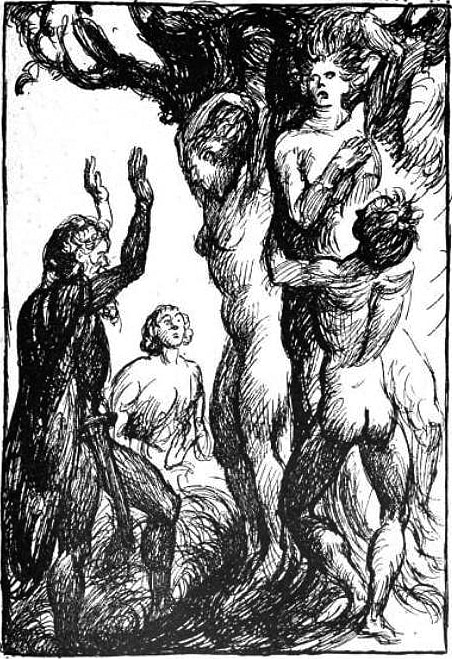
Understandably, Ask and Embla aren’t nearly as popular in modern pop culture as their Abrahamic counterparts Adam and Eve. They didn’t even make an appearance in the many MCU movies inspired by Thor and Norse mythology.
Nevertheless, mentions of Ask and Embla can be seen here and there in modern culture. For example, the Nintendo anime-style F2P tactical video game Fire Emblem Heroes includes two warring kingdoms named Askr and the Emblian Empire. These two are later revealed to have been named after the ancient dragon couple Ask and Embla.
Depictions of the actual Norse Ask and Embla can also be seen on wooden panels in the Oslo City Hall, as a sculpture in Sölvesborg in southern Sweden, and in other works of art.
In Conclusion
Ask and Embla are the first man and woman, according to Norse mythology. Created by Odin and his brothers from pieces of driftwood, Ask and Embla were given Midgard as their realm and they populated it with their children and grandchildren. Apart from this, not much is known about them, due to the scant information in the literature left behind by the Norse.




